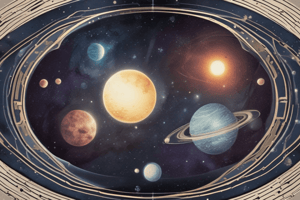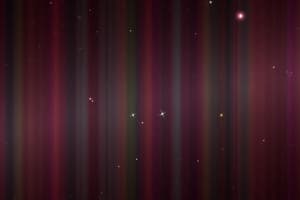Podcast
Questions and Answers
Which type of star is the most luminous?
Which type of star is the most luminous?
- Subdwarfs
- Supergiants (correct)
- Main sequence stars
- Dwarfs
What is the main process that powers main sequence stars?
What is the main process that powers main sequence stars?
- Thermonuclear reactions
- Nuclear fusion of helium into heavier elements
- Gravitational contraction
- Hydrogen fusion into helium (correct)
What happens to a star's outer layers during the red giant phase?
What happens to a star's outer layers during the red giant phase?
- They expand and are lost due to strong stellar winds (correct)
- They are ejected in a supernova explosion
- They remain unchanged
- They contract and increase in density
Which type of star is the coolest and least luminous?
Which type of star is the coolest and least luminous?
How does the Hertzsprung-Russell diagram help astronomers classify stars?
How does the Hertzsprung-Russell diagram help astronomers classify stars?
What is the defining characteristic of a red dwarf star?
What is the defining characteristic of a red dwarf star?
What happens to a low to medium mass star like our Sun when it runs out of fuel?
What happens to a low to medium mass star like our Sun when it runs out of fuel?
What is the most extreme form of stellar death?
What is the most extreme form of stellar death?
How do astronomers classify different types of stars?
How do astronomers classify different types of stars?
What is the key difference between a neutron star and a black hole?
What is the key difference between a neutron star and a black hole?
Which type of star is considered the most long-lived?
Which type of star is considered the most long-lived?
Flashcards are hidden until you start studying
Study Notes
Stars play a vital role in our universe, serving as sources of light and heat that sustain life on Earth. In this article, we will delve into the fascinating world of celestial bodies, discussing various aspects related to their existence, formation, and classification. We will explore different types of stars and the methods used by astronomers to classify them based on their properties.
Types of Stars
Stars come in many sizes and temperatures, each with its unique characteristics. Some of the main categories include:
-
Red dwarfs: These stars have masses similar to Jupiter's but can be up to 60 times larger in diameter. They burn hydrogen very slowly, making them incredibly long-lived - potentially lasting for trillions of years.
-
White dwarfs: When a low to medium mass star like our Sun runs out of fuel, it enters white dwarf phase, where it becomes extremely hot and dense, eventually cooling down over billions of years.
-
Neutron stars: Formed when massive stars reach the end of their lives, these super compact objects survive either as neutron stars or black holes, depending on the star's initial size.
-
Black holes: The most extreme form of stellar death occurs when large stars collapse under gravity, producing such high densities and pressures that they could not exist without being crushed by gravity. This forms a black hole, an area from which nothing escapes, including light.
Star Classification
Astronomers categorize stars using a system known as the Hertzsprung-Russell diagram, which plots stars according to their temperature and luminosity. This method helps identify distinct types of stars along an evolutionary sequence. Here, we briefly discuss some key classifications:
-
Main Sequence Stars: Most stars, like our Sun, spend much of their lifetimes as main sequence stars, burning hydrogen into helium in their cores.
-
Supergiants: Much more massive than main-sequence stars, these stars still radiate from hydrogen fusion but have higher luminosity due to their larger size.
-
Subdwarfs: Lower-mass, older versions of main-sequence stars that have lost outer layers due to strong winds during red giant phases.
The complexity inherent in studying stars reveals how much there is left to learn in astronomy. As technology advances and data collection improves, so too does our understanding of these celestial bodies and their vital role in our universe.
Studying That Suits You
Use AI to generate personalized quizzes and flashcards to suit your learning preferences.




